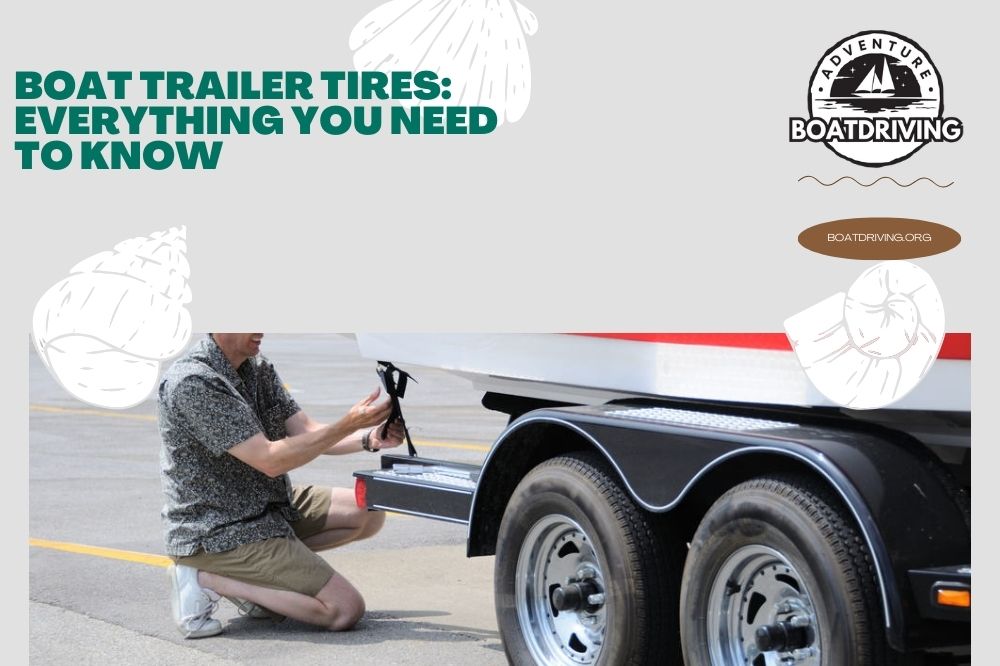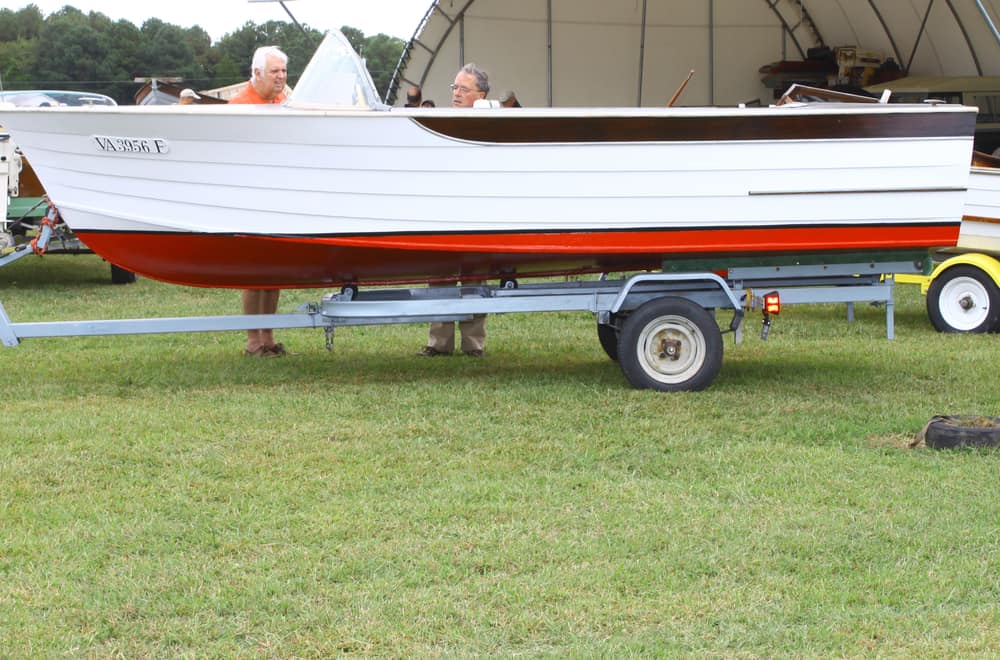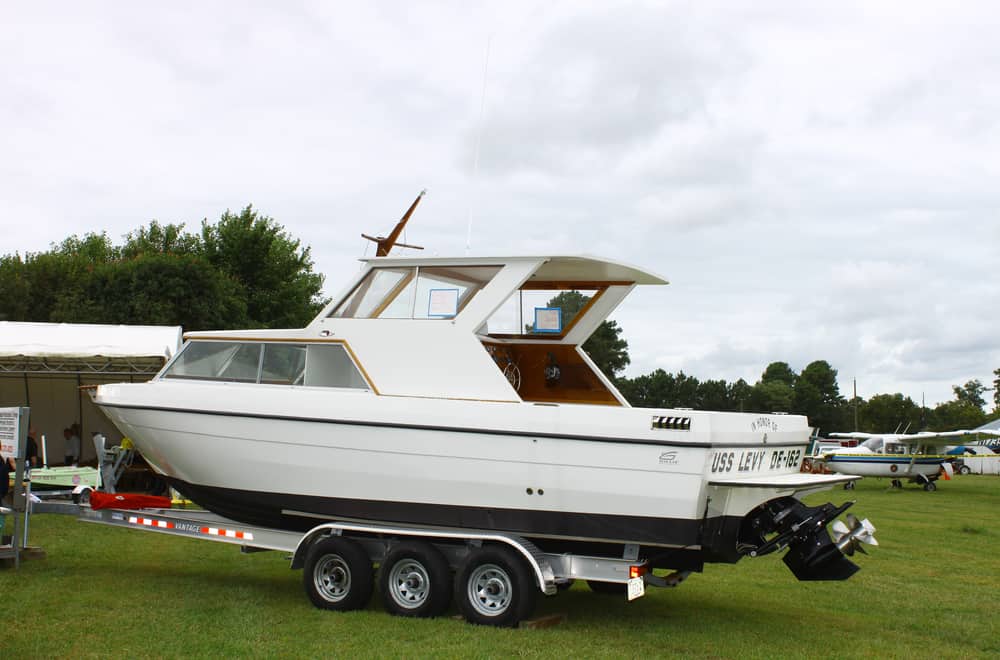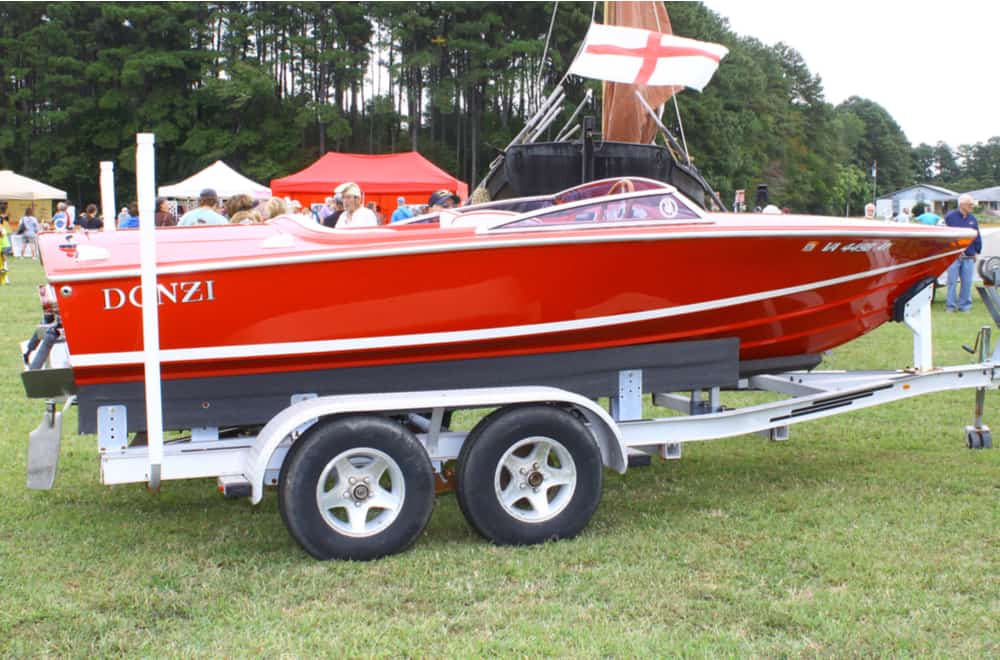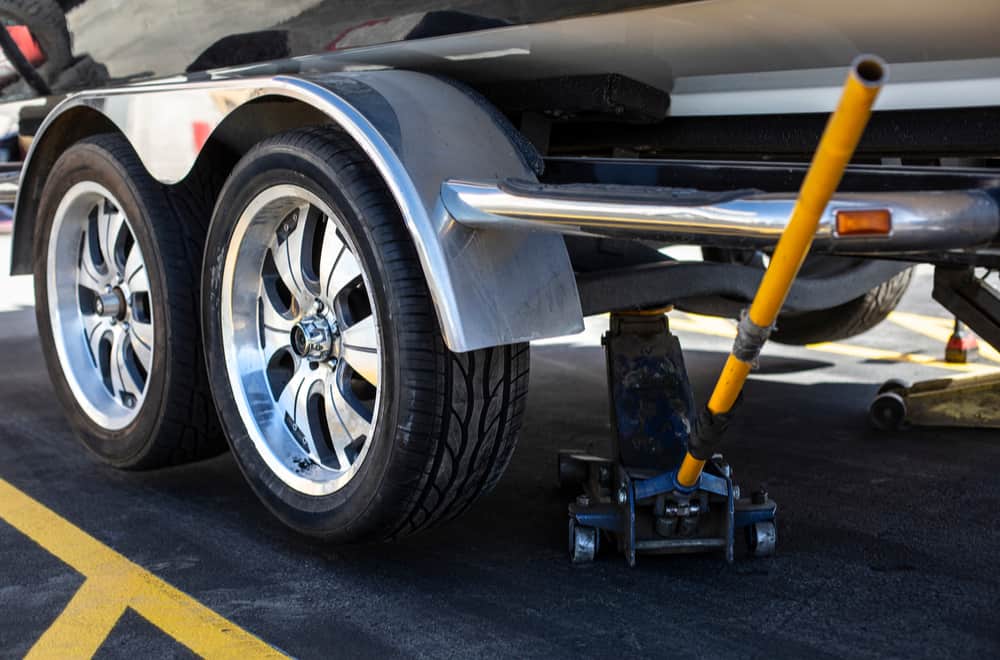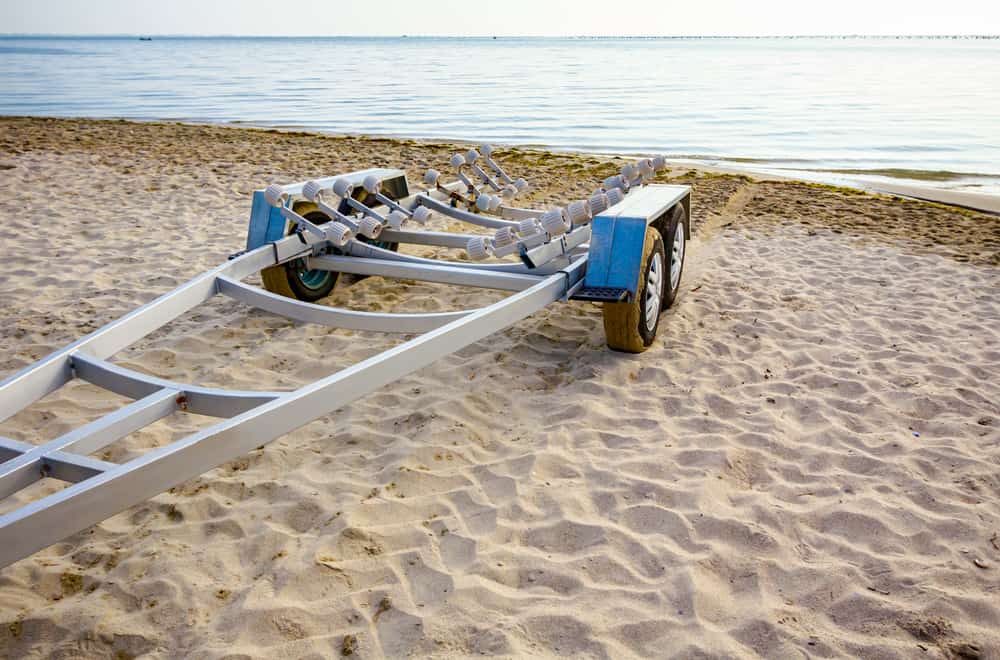Are you looking to buy new boat trailers tires?
Perhaps you got a new trailer and want to learn everything you can about it, including its tires?
Even if you aren’t new to boating, it helps to familiarize yourself with your trailer’s tires. Tire problems are among the top reasons many boaters call for roadside help.
Knowing your tires’ anatomy, how to spot signs of problems, and how to care for them can save you a lot of inconveniences from your trailer suddenly breaking down.
In this guide, I will explain everything you need to know about boat trailer tires. Later in the article, you will find some handy tips to care for your boat trailer tires.
So, without further ado, let’s get started.
Table of Contents
- 1. Trailer tires and automobile tires are not interchangeable
- 2. Sun exposure can cause tire wear and tear
- 3. Radial vs Bias Tires
- 4. Trailer tires should be inflated to a higher PSI than vehicle tires
- 5. Change boat trailer tires every 3 to 5 years
- 6. Every trailer tire has a specific load range
- Summary: Boat Trailer Tires; Everything You Need To Know
1. Trailer tires and automobile tires are not interchangeable
One of the biggest mistakes some boaters make is using automobile tires on their boat trailer.
You might be thinking: “Tires are tires, right?”
The answer is: No. Automobile tires and trailer tires are very different, and each is built uniquely for its own use. The two should never be interchanged.
Trailer tires have the initials ‘’ST’’ (Special Trailer) on the sidewall or the phrase ‘’Trailer Use Only.’’ Special Trailer tires have stiff sidewalls that keep the rig from swaying.
They are also designed with a higher load capacity than regular vehicles and
light trucks. ST tires have 10% more load capacity than those on a light truck and 40% more load capacity than a passenger vehicle.
ST wheels are narrower than the wheels of an ordinary car. The treads are shallower, keeping the wheels cool and the fuel consumption of the tow vehicle low.
On the other hand, automobile tires steer, swerve, and rotate when power is transmitted from the engine to the road. As such, the tires have flexible sidewalls to maneuver the road.
Passenger vehicles have their tires connected to a complex engine, steering, suspension and braking system. This isn’t the case with trailers tires, which spin independently without sophisticated machinery.
If someone tries selling you what they claim to be a trailer tire without these initials or words, they aren’t truthful. In other words, do not buy or use tires that don’t specifically indicate that they are for trailers only.
2. Sun exposure can cause tire wear and tear
Most boaters will attest that they use their trailers only a handful of times a year. The chances are that you leave your trailer in the same spot for weeks or even months at a time.
It is not uncommon for a trailer to travel less than 15,000 miles a year. Yet, trailers tires wear out incredibly fast. Even after using your trailer so few times and the tires looking to be in good condition, it is recommended that you change the tires after 3 to 5 years.
Because trailers sit in the same spot for so long, the tires are exposed to UV rays and oxidation. These two combined can quickly damage the tires, necessitating replacement.
UV rays, oxidation, and even freezing temperatures dry out the tires, causing small cracks on the sidewalls, surface of the treads, and inside the grooves. Oxidation damage can run deep in the tires, and you may not notice it until it is too late.
Covering your tires with trailer tire covers can minimize their exposure to the elements and slow down wear and tear. Also, before setting out, be sure to inspect the tires for cracks and signs of oxidation.
Avoid parking your trailer directly on concrete or grass for too long. The tires will absorb moisture and succumb to damage. Aside from covering the tires, you can place a piece of plywood underneath each tire or remove the tires, especially during winter when you aren’t using the boat.
3. Radial vs Bias Tires
There are two types of boat trailer tires: Bias-ply and radial tires. The type you opt for will mostly depend on how you use your trailer. Other factors such as your budget and the original trailer tires are also important considerations if you want to replace your tires.
Bias-ply tires come with stiffer sidewalls than radial tires. The stiff sidewalls help minimize swaying in the rig, keeping the trailer and load more balanced. With the stiff sidewalls, bias-ply tires can carry heavier loads. Bias tires are generally cheaper and are best used for short trips.
Radial tires are costlier but have a longer tread life. The average tread life of radial tires is 40,000 miles compared to 12,000 miles for bias-ply tires.
Radial tires don’t develop flat spots as easily as bias-ply tires when a trailer sits in the same position for a long time. Radials are the best option for longer trips. They stay cool for longer and can withstand the strain of a heavy load in a long-haul trip.
Radial trailers tires have more advantages over bias-ply tires. If you are going on a long trip, you can replace bias-ply tires with radial ones. Replacing radial tires with bias-ply tires is not recommended. Speak to a tire professional before attempting to switch your trailer’s tires. Installing the wrong tires on your trailers can be extremely unsafe.
Also, ensure that both trailer tires are the same size and type. Do not make the mistake of installing one radial tire and the other bias-ply tire in the same trailer. Refer to the trailer’s owner’s manual for the correct type, size, and load capacity to use on your trailer.
4. Trailer tires should be inflated to a higher PSI than vehicle tires
Low inflation is a common cause of trailer tire problems. Before hitting the road, use a good gauge to check the tire pressure measure in pounds per square inch (PSI). It is best to check the pressure when the tires are cold to measure accurately.
Trailer tires have a rated maximum PSI value marked on the sidewall; ensure your tire is always inflated to the recommended PSI. When underinflated, tires can overheat, resulting in serious damage.
It is common for boaters to inflate their trailer tires to a lower or similar PSI as the towing vehicle. But, trailer tires should actually be inflated to a higher pressure level because of their tough sidewall.
The good news is you can keep an eye on tire pressure throughout your trip without getting out of your vehicle. Simply invest in a tire monitor system!
A tire monitor system comes with a small monitor that you can mount onto the tire stem and a screen that you can keep in your car to monitor tire PSI. Power the screen by plugging it into your car’s cigarette lighter. You will then see each tire’s PSI and interior temperature.
5. Change boat trailer tires every 3 to 5 years
Trailer tires don’t wear out from miles of driving. Elements such as oxidation, moisture, and direct sunlight will gradually age your trailer tires.
The treads may look as good as new, but after a few years of use, the tires are likely to be internally damaged and should be replaced. The Tire and Rim Association recommends changing trailer tires every three to five years for maximum safety.
You can check how old your tires are by reading the information on the sidewall. Each ST tire has a Department of Transportation (DOT) stamp on the sidewall that shOWS the week and year the tire was manufactured.
Check the DOT initials on the tire and notice the last four digits on that line. The first two digits tell you the week the tire was manufactured, and the other two identify the year of manufacture.
For example, if the stamp reads DOT 3320, the tire was manufactured in the thirty-third week of 2020. You can determine the tire’s age and estimate the right time for a tire change with this information.
6. Every trailer tire has a specific load range
The load range is the maximum weight trailer tires can safely carry. The load ranges are categorized as B, C, D, or E, with B as the lightest and E as the heaviest load range. You can check your tire’s load capacity marked on the sidewalls.
Most trailer tires have a C or D load range, which means in a single axle trailer, one tire can carry a weight of up to 1,820l and both tires 3,640lbs. If yours is a double axel trailer, you should reduce the load you are carrying by at least 10% to ensure safety when towing your boat.
The speed you run at will also affect the load capacity. Trailer tires can run at an average speed of 65mph. If you increase the speeds, you should also adjust the tire PSI and load capacity.
It is safer to decrease the load capacity by at least 10 percent at higher speeds and increase the inflation pressure by 10 PSI. This will keep the trailer stable and the tires firm when towing the boat.
The general rule is to increase PSI when the load and speed increase.
Summary: Boat Trailer Tires; Everything You Need To Know
The tires of your trailer don’t seem important until your trailer breaks down in the middle of a trip and the tires are underinflated, worn out, or damaged. Luckily, inspecting your tires is easy—the sidewall’s condition will give you a clue into the tires’ health. Remember to use Special Trailer tires only for your trailers and not interchange with automobile tires. Happy trailing!
